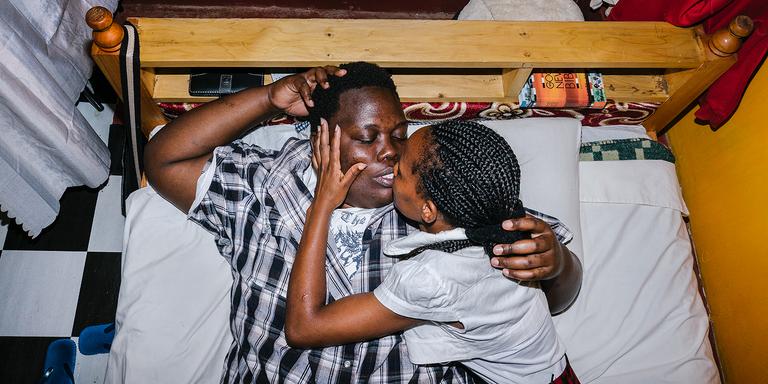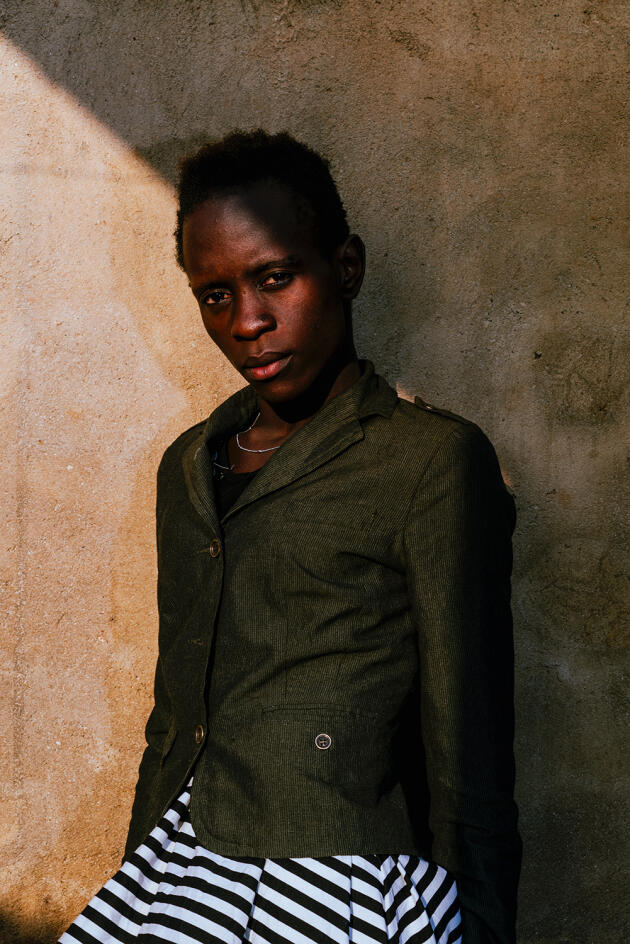


The pain of forced queer exile through the lens of Jake Naughton
In picturesIn May, Uganda enacted one of the world's most repressive and homophobic laws. Homosexuals have been increasingly stigmatized and flee to neighboring Kenya or even the US. Since 2014, photographer Jake Naughton has documented these journeys marked by pain and solidarity.
The story told by American photographer Jake Naughton's images, taken over four years and in three countries (Kenya, Uganda and the United States), is not immediately obvious. Naughton's enigmatically-titled series This Is How the Heart Beats features portraits, close-ups of parts of a face, a hand, a rosary and embraces on a bed. It all began in 2014, when Uganda introduced a bill crudely dubbed "Kill the Gays" in the Western media. It made those who have homosexual relations liable to the death penalty in the event of repeat offenses or doing so knowing they carry HIV. The bill was declared unconstitutional due to the lack of a necessary quorum in terms of the number of MPs participating in the vote.
There was a new development to this repression through legislation at the end of May, with the enactment of a law considered by LGBTQ+ rights organizations to be one of the most repressive in the world. It stipulates, for instance, that anyone "knowingly promoting homosexuality" faces up to 20 years in prison. It also forces all Ugandan citizens to report anyone they presume to be homosexual. Further, conversion therapies and drug prescriptions aimed at changing a person's sexual orientation or gender identity have been introduced. And finally, a provision makes "aggravated homosexuality" (recidivism) a capital offense.
The vicious circle of visibility
In 2014, Naughton – then a freelance photojournalist – was sent to Kenya for five days, paired with journalist Jacob Kushner, to follow LGBTQ+ refugees, mainly Ugandans fleeing persecution. "Kenya is not a panacea for sexual minorities," said Naughton. "But the UN High Commission had a strong presence here, and people came from all over East and Central Africa to find refuge." The two men gathered so many testimonies, and of such complexity, that they decided to continue this work.

"At the same time, Kenya was experiencing a wave of xenophobia and homophobia," said Naughton. "The exiles we photographed were caught in the crossfire." Back then, much was written about Uganda's legislative ambitions, but there was little coverage of the living conditions of the people on the ground. Naughton and Kushner documented the hotbeds of LGBTQ+ resistance and the survival of an underground queer community. "It was a vicious circle," said the photographer. "Because they were notoriously oppressed, LGBTQ+ Ugandans had gained international visibility and support from embassies and NGOs. But the more visible they were, the worse the repression became."
You have 50.21% of this article left to read. The rest is for subscribers only.
